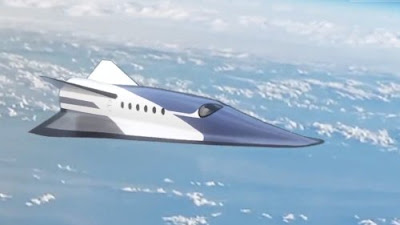Bullet Plane - No Aircraft Like It
Celera 500L is Shaped Like a Bullet, Torpedo and Egg
Source: Otto Aviation
Aircraft Designed to be Aerodynamically Green, Inexpensive & A Breakthrough
The new Otto Celera 500L bullet plane is like no other aircraft out there. It is distinguished by its aerodynamic shape, which is similar to a bullet, torpedo and egg. The design shape dramatically cuts drag on the aircraft and allows air to flow smoothly and freely around it. As a result, the plane burns far less fuel and is breakthrough in efficiency. Otto Aviation, a US startup in California, says it is 80% more fuel efficient than competing aircraft in its class and size. This new vehicle has the potential to be a breakthrough concept in aviation. It is so important because aircraft are one of the greatest polluters that contribute to climate change globally.
Let's Drill Down on the Engineering
This plane is a prototype designed by veteran aerospace engineer William Otto, CEO of Otto Aviation. His achievements include work on the B-1 bomber and the US Minuteman Missile program. He tasked himself with designing a new plane similar to the structure of a torpedo he worked on to fit more of them into submarines. The key was to develop a more efficient plane shape that needed less fuel to power it. To achieve that he used a composite mix rather than metal for the jet body. That design material cut the weight and required a smaller engine. The shape enables what is called "Laminar Flow". The shape of the aircraft is so smooth and fluid it allows air to flow over the aircraft with no disturbance or turbulence. Bottom line: a greatly more fuel efficient and inexpensive aircraft, with significantly less carbon emissions.
Numbers Crunching
Otto says the cost of flying his Celera is $328/hour versus $2100/hour for a similar plane. The plane gets 18 to 25 miles per gallon, which is similar to a SUV, as opposed to 2 to 3 miles per gallon for a similar plane. It can hit speeds of 460 mph and has a range of 4500 mile. Celera has a V12 diesel engine in the back of the plane that powers it. This engine, according to the company, has already cut carbon emissions over competitors' planes by 80%. The company says it can be replaced with an electric or hydrogen engine, which will result in zero emissions.
Next Steps
This aircraft has been tested with more than 50 flights at 251 mph at 17,000 feet. A more powerful engine is ready to enable higher speeds and altitudes up to 40,000 feet. A lot more testing is scheduled. Celera is expected to launch in 2025 as a business jet with up to six passengers and then as a regional jet with up to 40 passengers. It is a look at the future of flying innovation that is on the brink of takeoff. To take a look at many more flying concepts under development, go to https://read.amazon.com/kp/embed?asin=B093J89VF5&preview=newtab&linkCode=kpe&ref_=cm_sw_r_kb_dp_9TP60CS13BR1G74QPZ9Y
... ...






Comments
Post a Comment